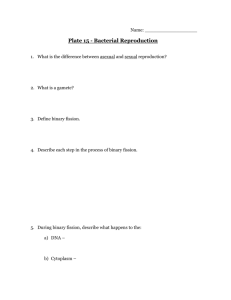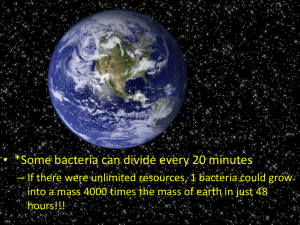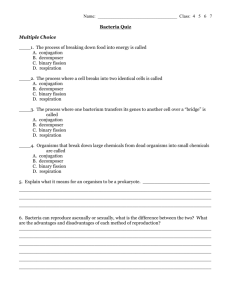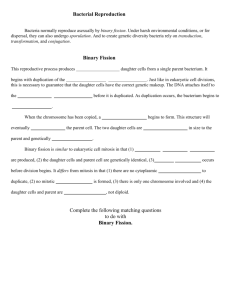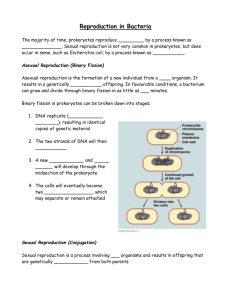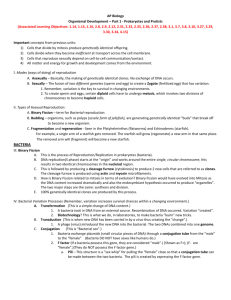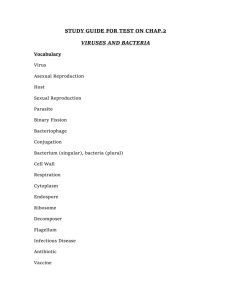Lesson 4.3 Binary Fission
advertisement
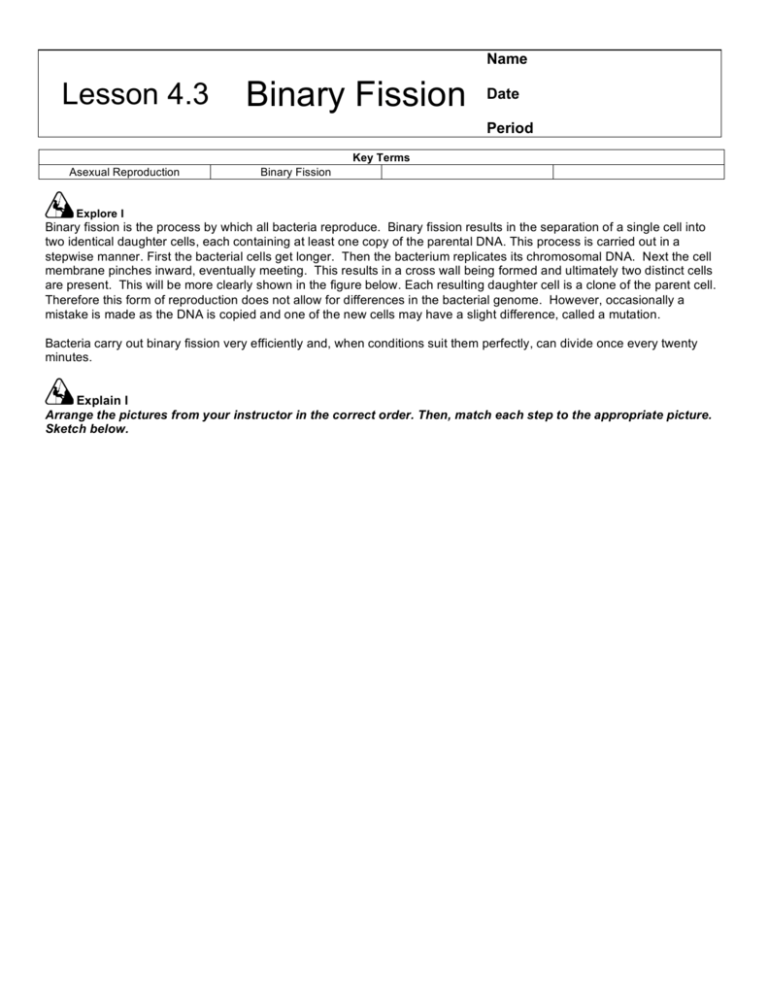
Name Lesson 4.3 Binary Fission Date Period Key Terms Asexual Reproduction Binary Fission Explore I Binary fission is the process by which all bacteria reproduce. Binary fission results in the separation of a single cell into two identical daughter cells, each containing at least one copy of the parental DNA. This process is carried out in a stepwise manner. First the bacterial cells get longer. Then the bacterium replicates its chromosomal DNA. Next the cell membrane pinches inward, eventually meeting. This results in a cross wall being formed and ultimately two distinct cells are present. This will be more clearly shown in the figure below. Each resulting daughter cell is a clone of the parent cell. Therefore this form of reproduction does not allow for differences in the bacterial genome. However, occasionally a mistake is made as the DNA is copied and one of the new cells may have a slight difference, called a mutation. Bacteria carry out binary fission very efficiently and, when conditions suit them perfectly, can divide once every twenty minutes. Explain I Arrange the pictures from your instructor in the correct order. Then, match each step to the appropriate picture. Sketch below. Explain II Binary Fission Read about E. Coli and then complete the questions below. E. coli. are bacteria. They cannot reproduce by mitosis or meiosis because they have no nucleus, and instead of pairs of chromosomes they have one circular chromosome and varying pieces of DNA or RNA called plasmids. Therefore, they reproduce asexually by a process known as binary fission as we have learned. Bacterial reproduction can be rapid. In fact, under ideal conditions, some bacteria can reproduce every 20 minutes, producing enormous numbers of bacteria quickly. If bacteria always reproduced this fast, they would cover the surface of the Earth within a few weeks. But this does not happen because bacteria do not always have ideal growing conditions. They often run out of nutrients, water, poison themselves with their own wastes, and predators eat them. Just think, when you scrub, shampoo, and gargle, you only remove a small fraction of the bacteria that live on and in you! 1) What type of cell undergoes binary fission? a) prokaryote b) eukaryote c) plant d) animal 2) Each resulting cell of binary fission is a _________ of the parent cell. a) mistake b) clone c) spindle d) mutation 3) When conditions are ideal, E. coli can divide as often as every __________________. a) 20 hours b) 20 minutes c) 20 seconds 4) Discuss in your own words two ways in which prokaryotic cells are different from eukaryotic cells. 5) Bacteria cannot undergo mitosis or meiosis. Explain. 6) Discuss three factors that limit bacterial growth. 7) If you were offered the choice of either a million dollars or a sum of money equal to a penny that doubles every day for 64 days in a row, which would you choose? In your own words, relate your choice to the growth rate of bacterial cells. 8) What is a mutation? Explain in your own words. (Hint: Look at the reading on the first page.)
